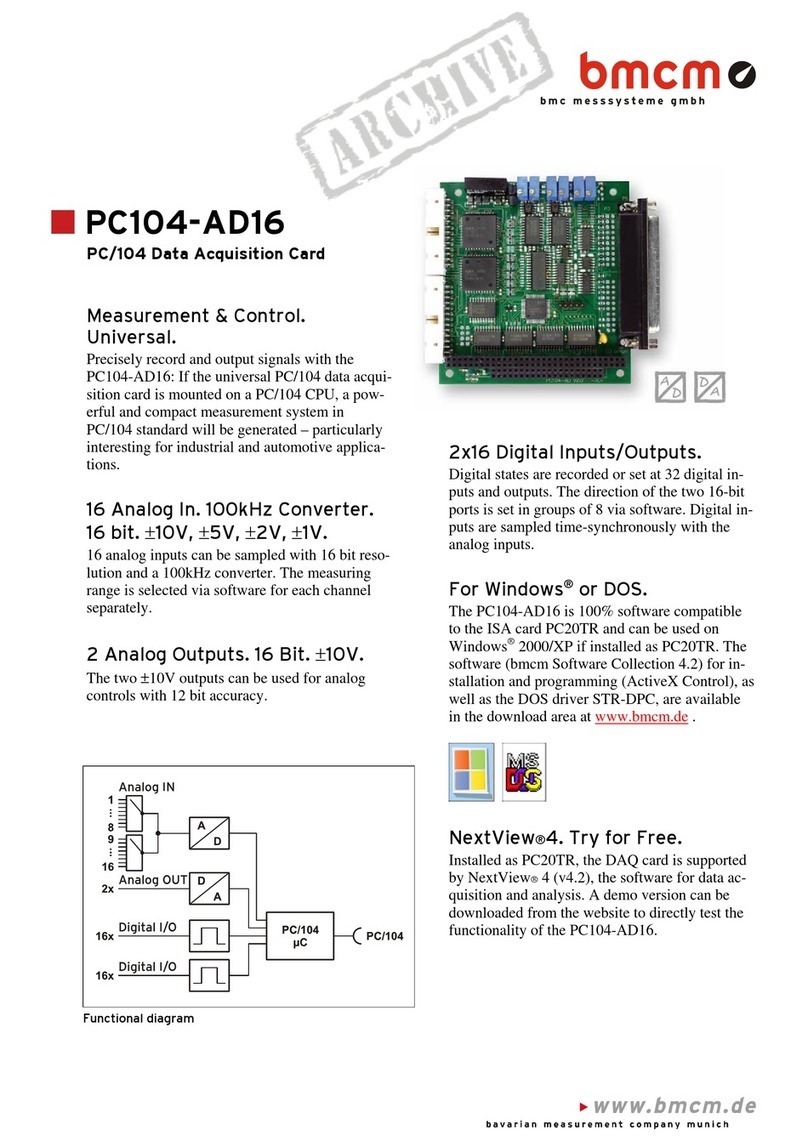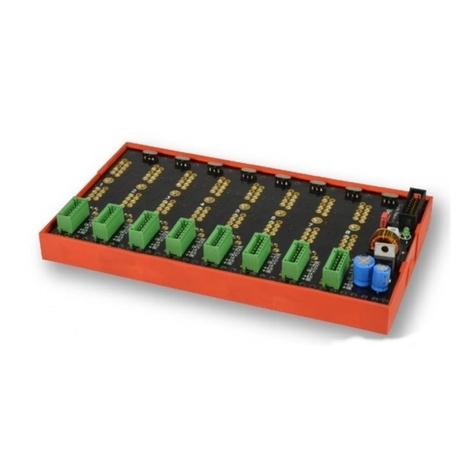
BP16
Page 8
4.2 Temperature Reference ZU-TR
Available as accessory for the backplane BP16 is the option ZU-TR.
The LM35DZ soldered to the D-Sub37 connector serves as a
reference for cold-junction compensation during thermocouple
measurement with the miniature amplifier MAL-THR.
If ZU-TR is attached to the 37-pin D-Sub IN female of the BP16, the
temperature reference is provided at each slot. The measuring leads of
the thermocouple only have to be soldered to the relating pins at the D-Sub37 male of the ZU-TR.
5 Important Notes for Using the BP16
• The BP16 is only suitable for extra-low voltages – please observe the relevant regulations!
• An electrically isolated power unit (with CE) must be used for power supply.
• All accessible pins are electrostatic sensitive devices. Provide for an earthed conductive work place when installing.
• The jumpers of the BP16 are very damageable and not too suitable for use in motion. In case of contact problems and
in steady applications, we recommend soldering the jumpers if necessary.
• For reasons relating to EMC, the BP16 must only be operated in closed housings.
• Sensors or signals are connected at the 37-pin input connector. Use screened cables! For good noise suppression
connect the shield of the sensor lines at one end only. Close open inputs if possible. ESD voltages on lines may cause
malfunction during operation.
• The ground of the BP16 is electrically connected to the installed PC data acquisition system and also with the PC ground.
Usually the ground of the PC is earthed, too. Be sure to avoid ground loops when connecting the sensors since they will
cause measuring errors!
• Only use non-solvent detergents for cleaning. The product is designed to be maintenance-free.
• The board must not be used for safety-relevant tasks. With the use of the product, the customer becomes manufacturer
by law and is therefore fully responsible for the proper installation and use of the product. In the case of improper use
and/or unauthorized interference, our warranty ceases and any warranty claim is excluded.
Do not dispose of the product in the domestic waste or at any waste collection places. It has to be either duly disposed
according to the WEEE directive or can be returned to bmcm at your own expense.
6 Technical Data (typical at 20°C, after 5min., 9-30V supply)
• Electrical Data
+9..30VDC, min. 0.3W, max. 4W
Sensor supply at pin 17 of D-Sub 37 IN:
+5VDC
, accuracy ±0.25%, TK 100ppm, electrically isolated
max. 50mA (if supplied with 9..30VDC)
app. ±9V (max. 100mA), electrically isolated
• General Data
37-pin D-Sub-D female for input and output each at the back and front side of the device
3-pin DIN plug at the back of the device
storage and operating temperature -25..70C
EN61000-6-1, EN61000-6-3, EN61010-1; for decl. of conformity (PDF) visit www.bmcm.de
ElektroG // ear registration:
RoHS and WEEE compliant // WEEE Reg.-No. DE75472248
Max. permissible potentials:
60V DC acc. to VDE
, max. 1kV ESD on open lines
device in aluminum housing, 3-pin coupling for power supply, 37-pin analog out cable
2 years from date of purchase at bmcm, claims for damages resulting from improper use excluded
• Accessories
miniature measuring amplifiers and converters of the MAL / MAL-ISO series
ZU-TR with 37-pin D-Sub male
power supply unit ZU-PW40W (24V, 1.67A)
gender changer ZU37SS; waterproof housings ZU-PBOX-PG, ZU-PBOX-LAN
Manufacturer: BMC Messsysteme GmbH. Subject to change due to technical improvements. Errors and printing errors excepted. Rev. 4.3
02/05/2020



























